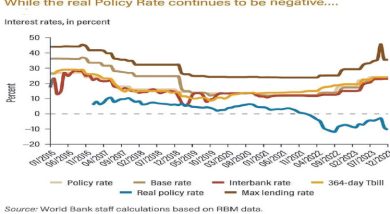Admarc needs K30bn to survive—report
A study conducted by Oxfam Malawi has recommended the re-allocation of K30 billion (US$66.7 million) from Farm Input Subsidy Programme (Fisp) budget to the State-owned grain trader, Admarc, if the institution is to reclaim its lost glory.
Titled, ‘An Analysis of Malawi’s National Budget Trends in Relation to Admarc’, the study, whose results were disseminated on Friday in Lilongwe, was commissioned to inform its campaign for an efficient Admarc that is adequately and timely funded so that it buys farmers produce soon after harvesting.

Agriculture Development and Marketing Corporation (Admarc), a parastatal set up to support price stabilisation and to ensure food security, has been one of the major loss-making parastatals, milking taxpayers’ money with no sign of efficiency.
Business News understands that currently, Admarc is surviving on borrowing from commercial banks for its day-to-day operations and is not directly benefiting from government subvention unless the institution is carrying out a government programme.
“What the scenarios indicate are that government could spend between K15 billion (US$33.3 million) to as much as K30 billion of resources reserved for subsidy to provide market for smallholder farmers produce,” said Humphrey Mdyetseni, one of the co-authors of the report.
He explained that the findings indicate that the plausible expenditure growth trends from the budget to the agriculture sector as a whole have not translated into growth trends in budgetary allocations to Admarc.
Between 2004/05 and 2014/15 financial years, Admarc funding share to the agriculture sector budget has been averaging two percent and sunk to as low as 0.3 percent in 2008/09 budget.
Mdyetseni said the only notable allocation was the six percent of the total agriculture sector allocation recorded for 2004/05 budget when the country had a food security crisis.
In the 2014/15 budget, government allocated K142 billion (US$315.6 million) towards the agriculture sector of which K50.8 billion (US$11.3 million) was for Fisp, targeting 1.5 million beneficiaries.
Reacting to the study recommendations, Minister of Agriculture, Irrigation and Water Development Allan Chiyembekeza yesterday said he is yet to see the contents of the report.
He, however, noted that whatever the study recommends is not yet final as it requires his ministry’s blessings.
Ministry of Finance spokesperson Nations Msowoya could not be reached yesterday to give government’s input on the study recommending more funding to an institution, which has been draining taxpayers’ money over the years.
But Mdyetseni argued that in terms of a government bailout strategy, the study observes that if Admarc were to be given resources to buy 150 000 metric tonnes of maize, this would require approximately K15 billion, representing 30 percent of the 2014/15 Fisp budget.
Malawi Economic Justice Network (Mejn) executive director DalitsoKubalasa said continued low funding to Admarc has inflicted more misery on smallholder farmers.
Admarc chief executive officer Foster Mulumbe told Business News the institution is facing “liquidity problems” and also late funding from government.






Am very happy that people knows in this country that ADMARC LOST ITS GLORY……Koma akuvutika ndi ndani? Only POOR PEOPLE .. people they go without food in this country ..God forgive our leaders …
why is it that the government cannot see that a vibrant ADMARC will ensure a checked inflation rate? we all know our inflation rate is well determined by food prices which of them all Maize is the major contributor to any price variations. if the price of maize is checked, which ADMARC does effectively and efficiently, the general food inflation will be controlled thus controlling the general inflation rate of the country.